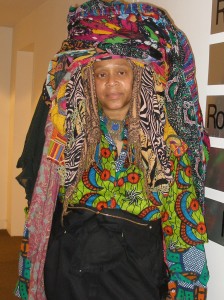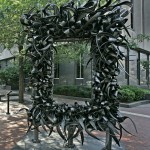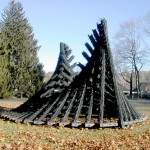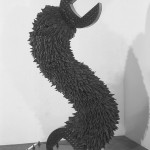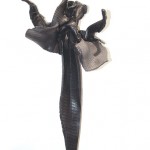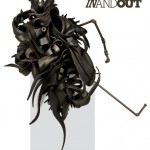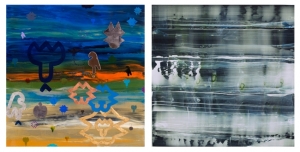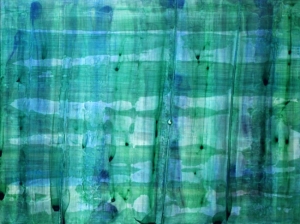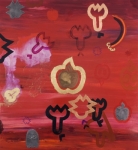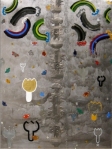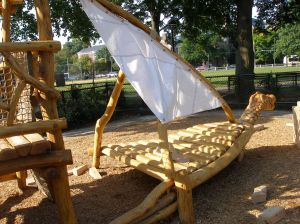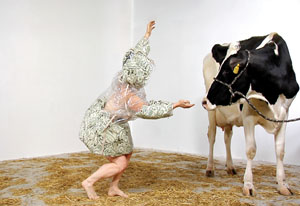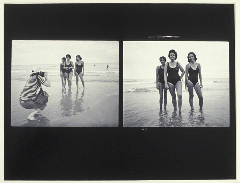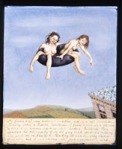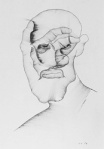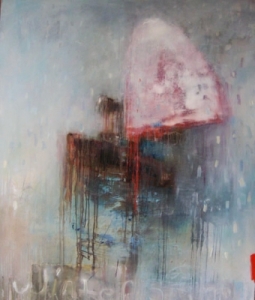Art of Decay: Where Do We Go From Here?
This month, Charles LeDray and Evelyn Rydz at the Institute of Contemporary Art, Boston, and Leonardo Drew, at the DeCordova Museum in Lincoln, MA, share a common theme–all focus on decay and the passage of time.
 DeDray makes small items–men’s clothing, thousands of tiny ceramic pots, sculptures in stitched fabric, carved bone, and wheel-thrown clay. As ICA materials point out, the smaller-than-life formal suits, embroidered patches, ties, and hats, as well as scaled-down chests of drawers, doors, and unique, thimble-sized vessels–and even facsimiles of used clothing stores complete with dust, make the viewer feel large and encourage thought about the content of the constructions. For example the coat in the photo to the left encompasses all sorts of other clothing–bras, pants, tops–making the point that individuals are composites of their experiences and other people.
DeDray makes small items–men’s clothing, thousands of tiny ceramic pots, sculptures in stitched fabric, carved bone, and wheel-thrown clay. As ICA materials point out, the smaller-than-life formal suits, embroidered patches, ties, and hats, as well as scaled-down chests of drawers, doors, and unique, thimble-sized vessels–and even facsimiles of used clothing stores complete with dust, make the viewer feel large and encourage thought about the content of the constructions. For example the coat in the photo to the left encompasses all sorts of other clothing–bras, pants, tops–making the point that individuals are composites of their experiences and other people.
My friend E liked the exhibit–because it elicited people no longer with us. S, who tends to save things, found it interesting.

Nearby, in the galleries housing winners in the ICA’s Annual Foster Prize Exhibit, Evelyn Rydz’s “intricate drawings of beaches, based on her own photographs–focus on objects she finds washed up on coastlines worldwide. ”
According to the ICA, this work explores ” the site where sea meets land”…and shows “characters with long stories to tell.” She “references the journey and transformation that these objects have undergone, illuminating their role as castaways in foreign landscapes.”
 At the DeCordova, Drew’s show, “Existed” highlights “the cyclical nature of creation, decay, and regeneration through a selection of large-scale sculptures, installations, and works on paper.
At the DeCordova, Drew’s show, “Existed” highlights “the cyclical nature of creation, decay, and regeneration through a selection of large-scale sculptures, installations, and works on paper.
Built from rows of stacked cotton and wooden boxes, stuffed with rags, covered with scavenged objects, and caked with rust to suggest degeneration, Drew’s sculptural work is made to resemble the detritus of everyday life.
The artist often ages his found and fabricated materials, employing a process that is physically and conceptually steeped in memory, history, and the passage of time. These disparate materials are often composed within a grid that organizes the chaos into an ordered structure.
Not exactly the pleasantest of subjects.
And I suppose it’s good to be able to find beauty in decay–or to make beauty of it.
In pondering the decisions to highlight these artists, I can’t help but conclude that the curators are making statements about the current state of civilization, politics, and art. All of these artists are highly skilled at what they do. But I ask, after exploring and commenting on decay and loss, what is left for them (and us?) to do?
Anita M. Harris
Anita M. Harris, a writer and photographer, is president of the Harris Communications Group of Cambridge, MA.
